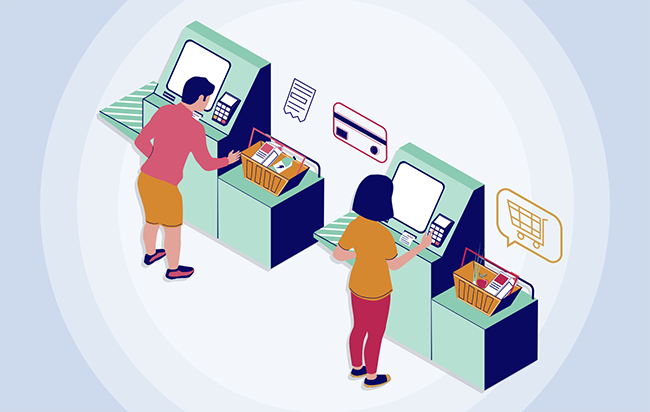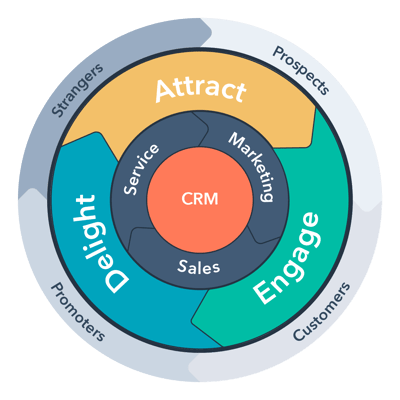
How can we remove friction from the sales section of the flywheel for B2B technology companies? These are complex solutions that cannot be easily explained, priced or even in some cases tested.

For companies selling complex B2B solutions providing customers with self-service checkout, will set you apart. Providing a better user experience by enabling users to do their research, decide and buy with as little friction as possible will guarantee improved success. A digital self-service strategy can harness the power of your people and your technology to win sales and keep your buyers happy. But how?
If you are like me, you get annoyed when salespeople call you out of the blue even if it's a product you are looking into. Most of us prefer to do our research online and then make the purchase at our own pace. At most, we have a sales call to answer a few last questions.
When was the last time you got a call from a sales rep, and your immediate reaction was positive?
Selling To Humans
The fact is we are selling to other humans even when they work at an enterprise. People still prefer to get their information online instead of talking to a salesperson if they can. Your buyers expect a familiar online experience similar to their other consumer experiences. Covid-19 has proven that we can do more remotely than we ever imagined before 2020. Multi-million dollar funding, purchases, and acquisitions have happened over video calls, so I am sure that wherever your company is now with your online buying process, it can be taken to the next level.
Multi-million dollar funding, purchases, and acquisitions have happened over video calls.
Maximizing Impact Through A Clear Focus
If you’re only looking at the traditional sales funnel, you’ve probably identified teams within your company to take responsibility for connecting with prospects at each stage. Developing a comprehensive digital self-service strategy demands that you take a step back and evaluate the ecosystem of your business. Using the flywheel, let’s examine the digital self-service strategy.:
Attract
Attract is all the activities we do to get noticed by the right people, and this is a place where B2B is doing well. Companies are value-driven and doubling down on educational content marketing and thought leadership. These tactics show prospects you know what you are talking about and that your products should be taken seriously.
Engage
Engage means creating relationships and enabling buyers to engage with you on their preferred timeline and channels. In most cases, technology companies delivering sophisticated complex products or services to enterprises need prospects to fill out a form on the website to obtain their contact information. The goal is always to set up a meeting or demo when a lead is produced. Is this really the way of the future? I think it’s time to learn from our B2C brethren.
B2B companies can really innovate by laying out what additional information buyers are looking for. If you think about it it's the same as with any product you want to buy. Your product is more complex but the answers still need to be answered:
- How much does it cost?
Why are there no pricing pages on so many company websites? Or if they do have one it is just a landing page with a contact us for custom pricing? Take Marketo for example their pricing page requires you to contact sales while their 2 main competitors HubSpot and Pardot both have detailed pricing information. Transparency drives trust and not having pricing does the opposite. I know what you are thinking, “our solution is complicated and is different based on the customer.” That is true, but it is not an insurmountable obstacle. You can create a calculator like NetApp or at least help customers get a benchmark with a clear understanding of what will drive costs up and down. - What’s the experience post-sale?
If you’ve done a great job with your content and sales process, then the buyer has this picture of their paradise once they have your software setup. But before that, they want to know what kind of hell they will go through to get there. What can you do to give them a clear picture of what it takes to implement your solution? The more transparent you are with the good, the bad and the ugly, the more trust you will build, and it will go a long way in setting expectations and ensuring customer delight, the key for the 3rd part of the flywheel.
Here is where you can provide:
- Project plan templates
- Who is needed as the customer POC
- Estimated time/effort
- Documents or data to prepare
- Customer testimonials
- How-to-videos
- What other options are available?
If you are selling something, you have a competitor; either another company or an internal team, probably even both. Your buyer is making an assessment, so why not give it to them? Yes, I am saying writing and sharing comparisons with your competitors in the most honest way you can. They are going to do it on their own anyways. Post it on your website and remember trust is the best currency and when two options seem similar, most opt for the company they trust more. Have I mentioned transparency? I can’t stress it enough.
The best (but not always feasible) option would be to provide a self-selection wizard that can spit out pricing and maybe even lead right into an order. Now you are probably arguing that your competitors will now know your prices… NEWS FLASH: you probably know what your competitor’s prices are and most likely, they already know yours. Bottom line, more information on pricing means less friction in the buying process and more trust with your buyers.
Delight - The final frontier
HubSpot describes this as tying your success to your customers’ by shifting resources to be more effectively distributed throughout the entire customer experience. Basically, by making customers happy they will bring you more business. I can definitely attest to that with more than 50% of our new business coming via customer referrals. You should never ignore the importance of customer satisfaction.
More information on pricing means less friction in the buying process and more trust with your buyers.
Customer referrals or review
As consumers, we always prefer to buy something that is recommended by someone we trust. We also rely on independent 3rd party reviews. Some SaaS companies are ahead of the curve and are leveraging software review sites like G2 Crowd or Trust Radius, which allow users to rate your products objectively. If you have more complex products, you can also check out IT Central Station. The main point here is to give your prospect easy access to a 3rd party review or finding someone they know using your product.
Conclusion
Let’s recap: Right now you are most likely hiding your pricing because it is “too complicated” and needs to be priced individually and/or because you want it kept confidential. As a result, you are losing potential customers who fall in the sales process due to things as simple as scheduling conflicts on an initial call! Imagine how much simpler it could be if you take the time to invest in a self-service pricing page providing at least an estimated quote to the potential customer. How many customers would you need to close in order to make up the investment?
The bottom line
As time goes on, I believe that the farther companies can take buyers digitally the more they will win. This will require improving the buyer's journey on your website and building trust online. The good news for companies selling complex solutions is that you can be sure your competition is not doing this. This is your chance to innovate and get ahead of the pack.

by Perry Nalevka on June 25, 2020
CEO of Penguin Strategies






